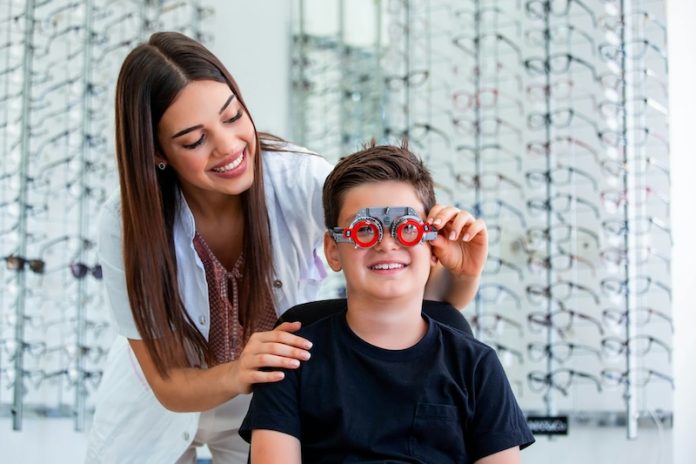
Researchers from Flinders University have made a significant discovery that could simplify the diagnosis of neurodevelopmental disorders like attention deficit hyperactivity disorder (ADHD) and autism spectrum disorder (ASD).
Published in Frontiers in Neuroscience by Dr. Paul Constable and colleagues, this study introduces a potential new biomarker based on the electrical activity of the retina, offering a more straightforward approach to diagnosing these conditions.
ADHD and ASD are the most commonly diagnosed neurodevelopmental disorders in childhood, affecting a significant number of children globally.
However, because these disorders share many symptoms, diagnosing them can be challenging and time-consuming.
The traditional process often involves a complex assessment of behavioral and developmental history, which can be subjective and vary widely among different practitioners.
The study utilized an electroretinogram (ERG), a diagnostic tool that measures how the retina—the light-sensitive layer at the back of the eye—responds to light. This test provides insights into the electrical activity of the retina, which is connected to the brain’s neural pathways.
Findings from the research revealed that children with ADHD exhibited higher overall ERG energy, indicating more intense retinal activity in response to light. In contrast, children with ASD showed lower ERG energy, suggesting less retinal response to the same stimuli.
These distinct patterns could serve as unique biomarkers for each condition, potentially simplifying the diagnostic process.
By analyzing the specific nerve responses generated in the retina and linking them to the brain’s chemical pathways, researchers believe it’s possible to pinpoint differences not only between typically developing children and those with neurodevelopmental disorders but also between children with ADHD and those with ASD.
This breakthrough could lead to improved diagnosis and treatment strategies for ADHD and ASD. With better diagnostic tools, healthcare providers could more accurately identify these conditions earlier in a child’s life, leading to more targeted interventions and support.
The discovery that simple retinal tests can provide this level of diagnostic insight is promising for the future of neurodevelopmental disorder management, offering hope for quicker, less invasive testing methods that could significantly benefit affected families and individuals.
If you care about autism, please read studies that cats may help decrease anxiety for kids with autism and new study may develop better treatment for autism
For more information about health, please see recent studies about how to eat your way to a healthy brain, and results showing this type of food may contribute to autism.
Copyright © 2024 Knowridge Science Report. All rights reserved.



